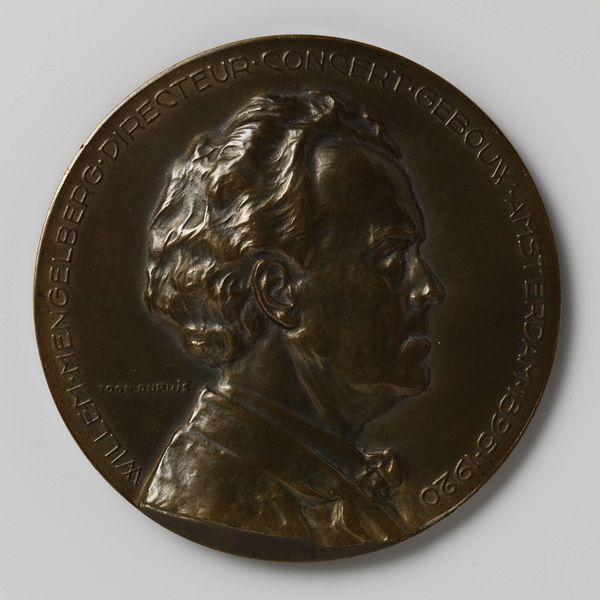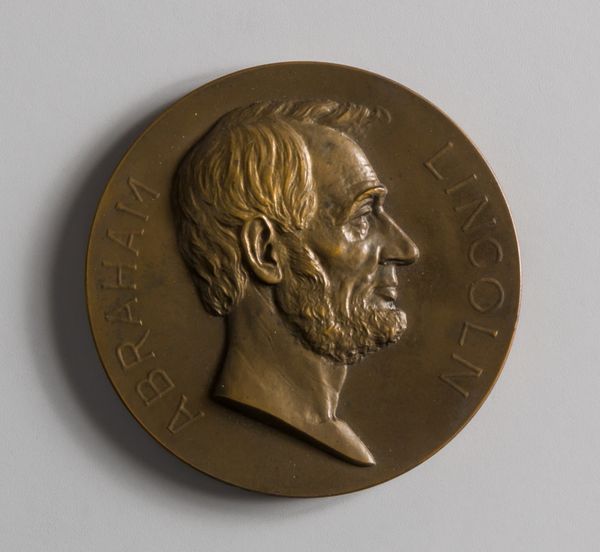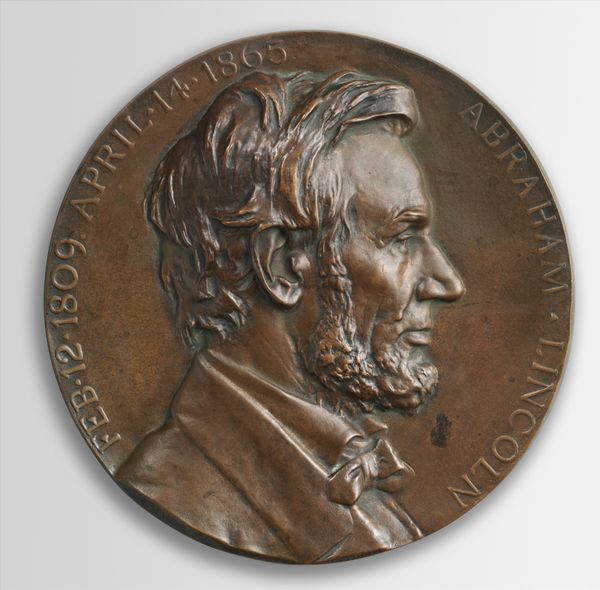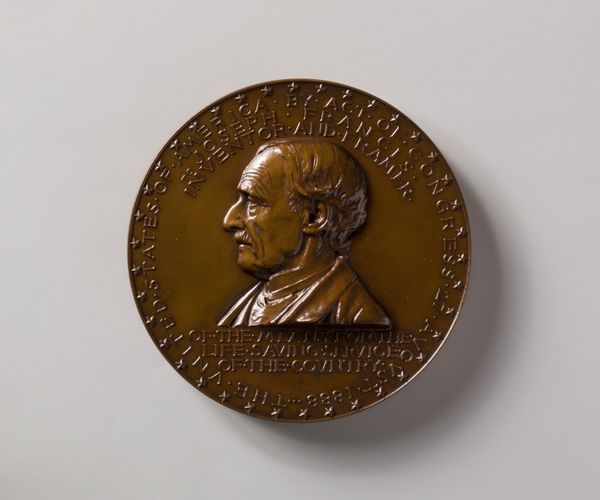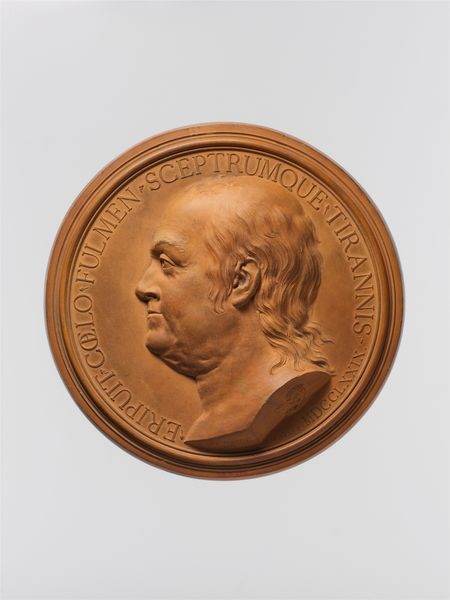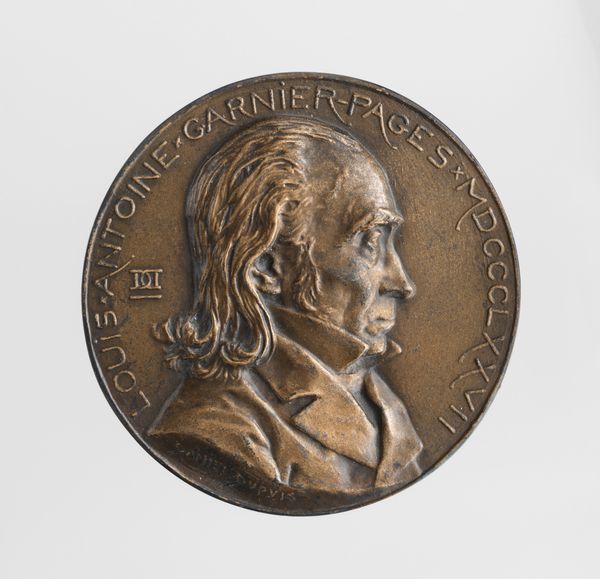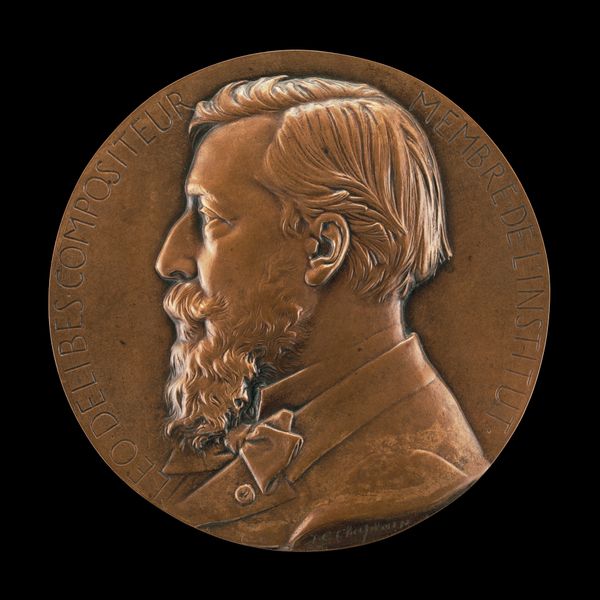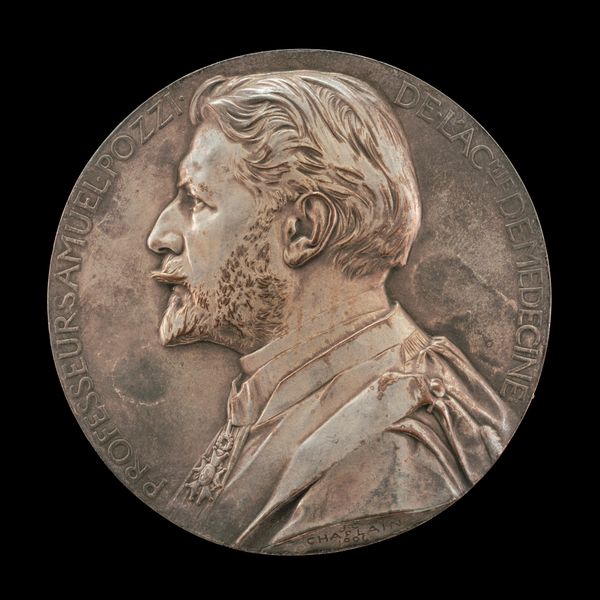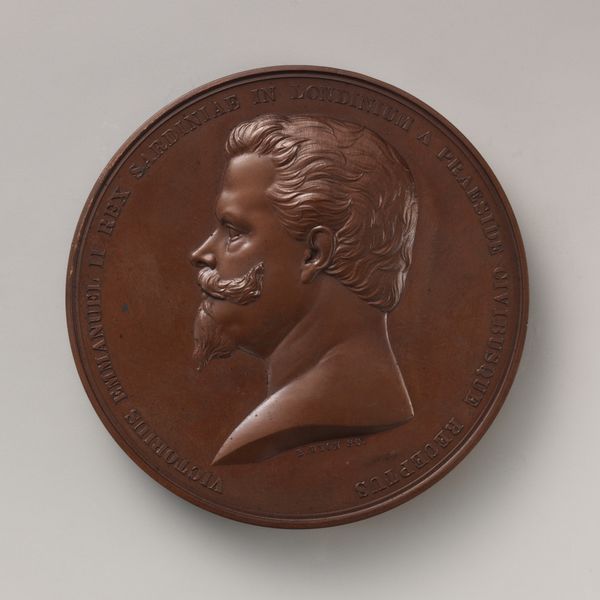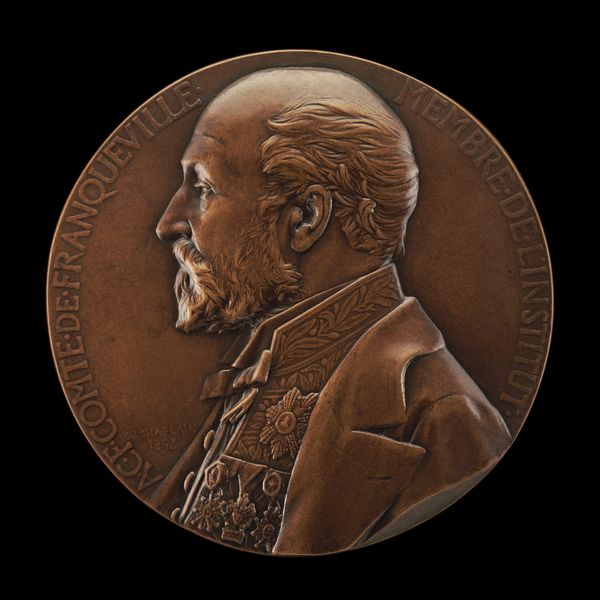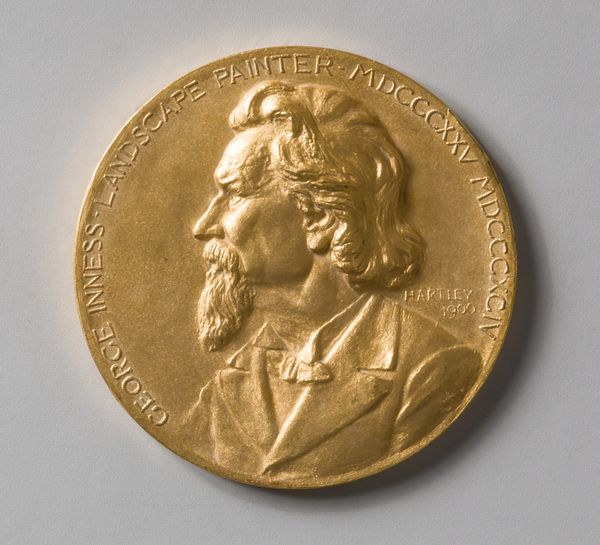
Victor Emanuel's Visit to the Corporation of London 1855
0:00
0:00
bronze, sculpture, engraving
#
portrait
#
medal
#
sculpture
#
bronze
#
sculptural image
#
sculpture
#
decorative-art
#
engraving
Dimensions: Diameter: 2 7/8 in. (7.3 cm)
Copyright: Public Domain
Editor: Here we have a bronze medal crafted in 1855 by Benjamin Wyon, commemorating Victor Emanuel's Visit to the Corporation of London. The regal profile gives off such a… stately impression. What cultural symbols or ideas jump out at you? Curator: Immediately, I see power legitimized and immortalized in miniature. Medals, throughout history, act as potent carriers of cultural memory. The very material, bronze, suggests permanence and importance. What do you make of the Latin inscription circling the portrait? Editor: I confess my Latin is a bit rusty! Curator: No worries! Inscriptions function as explicit messages but also as subtle signifiers of elite status. Latin, even in 1855, evoked classical ideals of governance and authority. It says, essentially, "Victor Emanuel II, King of Sardinia, received in London under the auspices of the city." It is a cultural declaration. Note the profile pose, common for coins and official portraits since antiquity... what associations does that choice trigger for you? Editor: It does feel very Roman, very…imperial. So the medal isn't just about the visit itself, but also about connecting Victor Emanuel to a longer, established history of power? Curator: Precisely! It invites the viewer to associate him with virtues of past rulers, shaping his image through symbolic lineage. Medals create not just memories but a preferred cultural narrative for posterity. Consider how simple gestures, the tilt of the head, or a particular hairstyle, became visual emblems recognized throughout the Sardinian kingdom and beyond. Editor: That’s fascinating. I never considered how deliberate each element of what feels like such a simple object is, or its intention to create a certain perception across time. Curator: Indeed, a powerful visual tool.
Comments
No comments
Be the first to comment and join the conversation on the ultimate creative platform.

